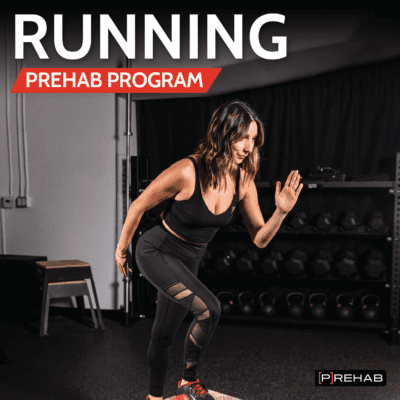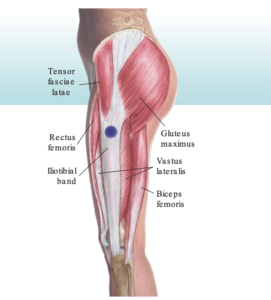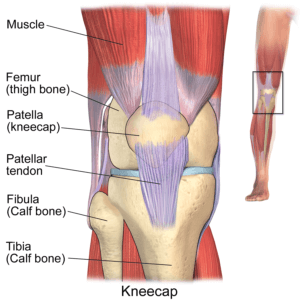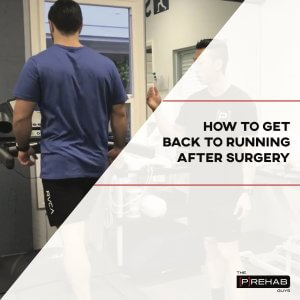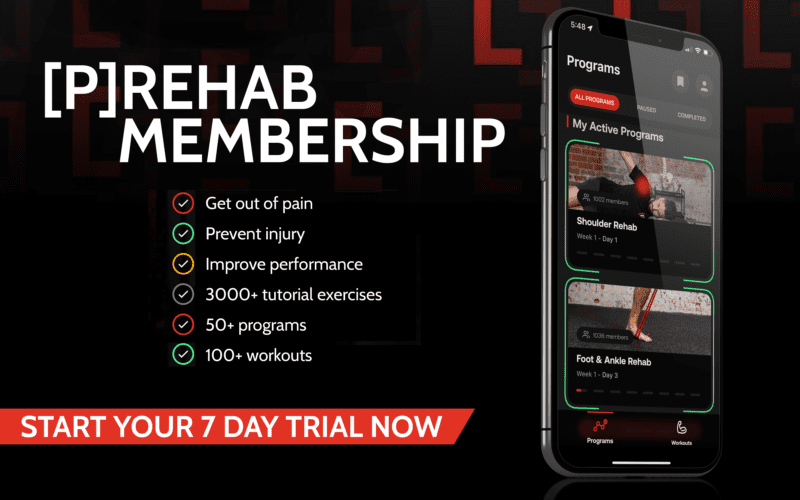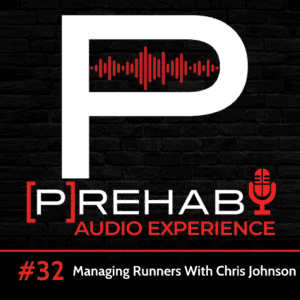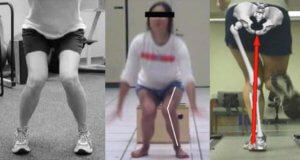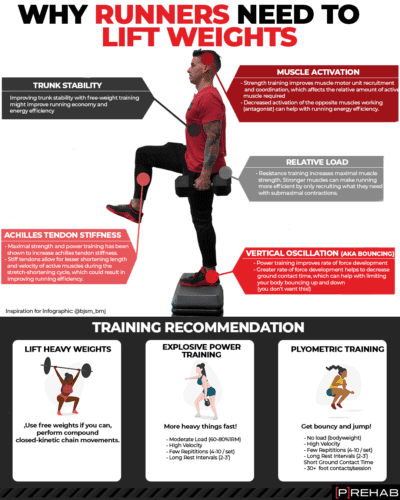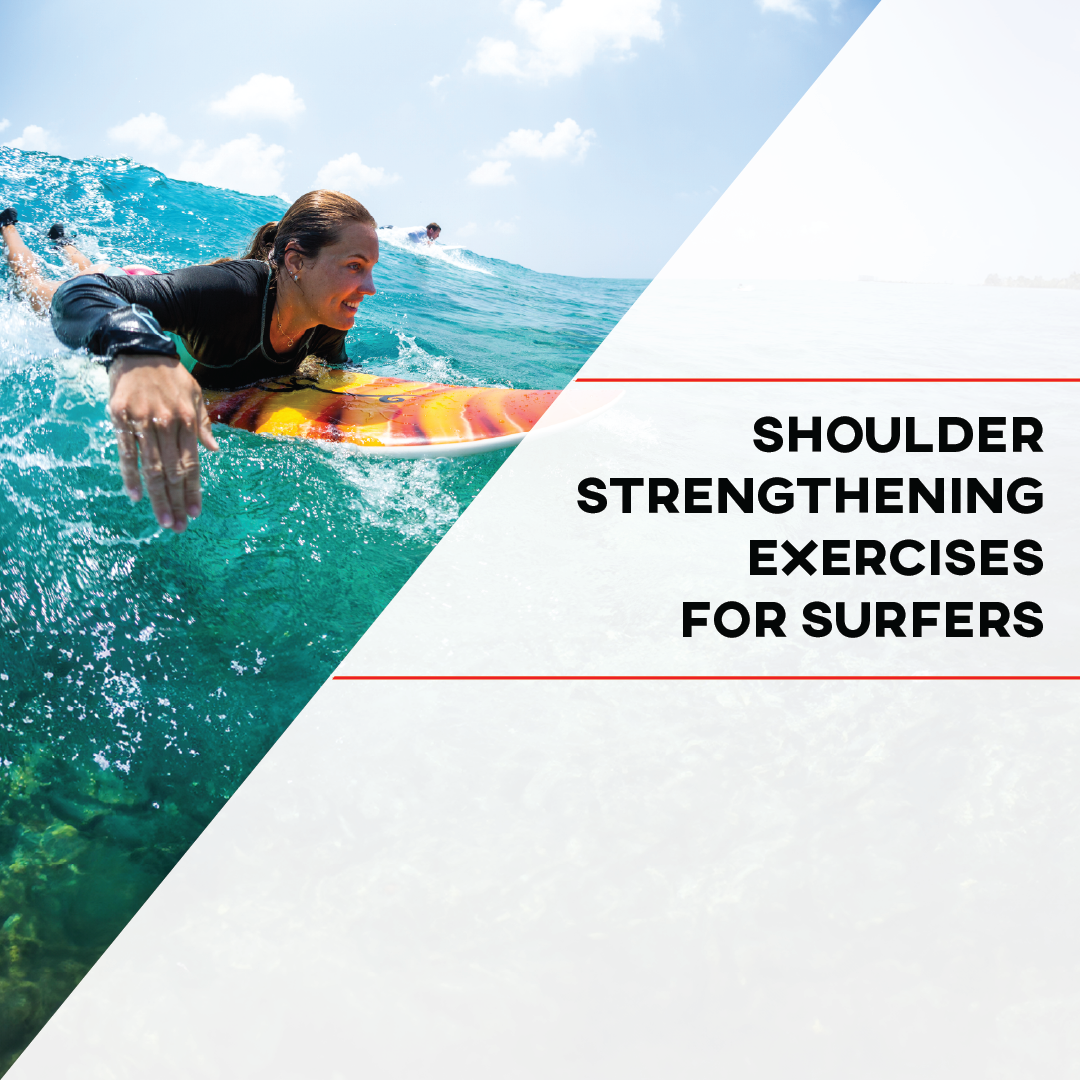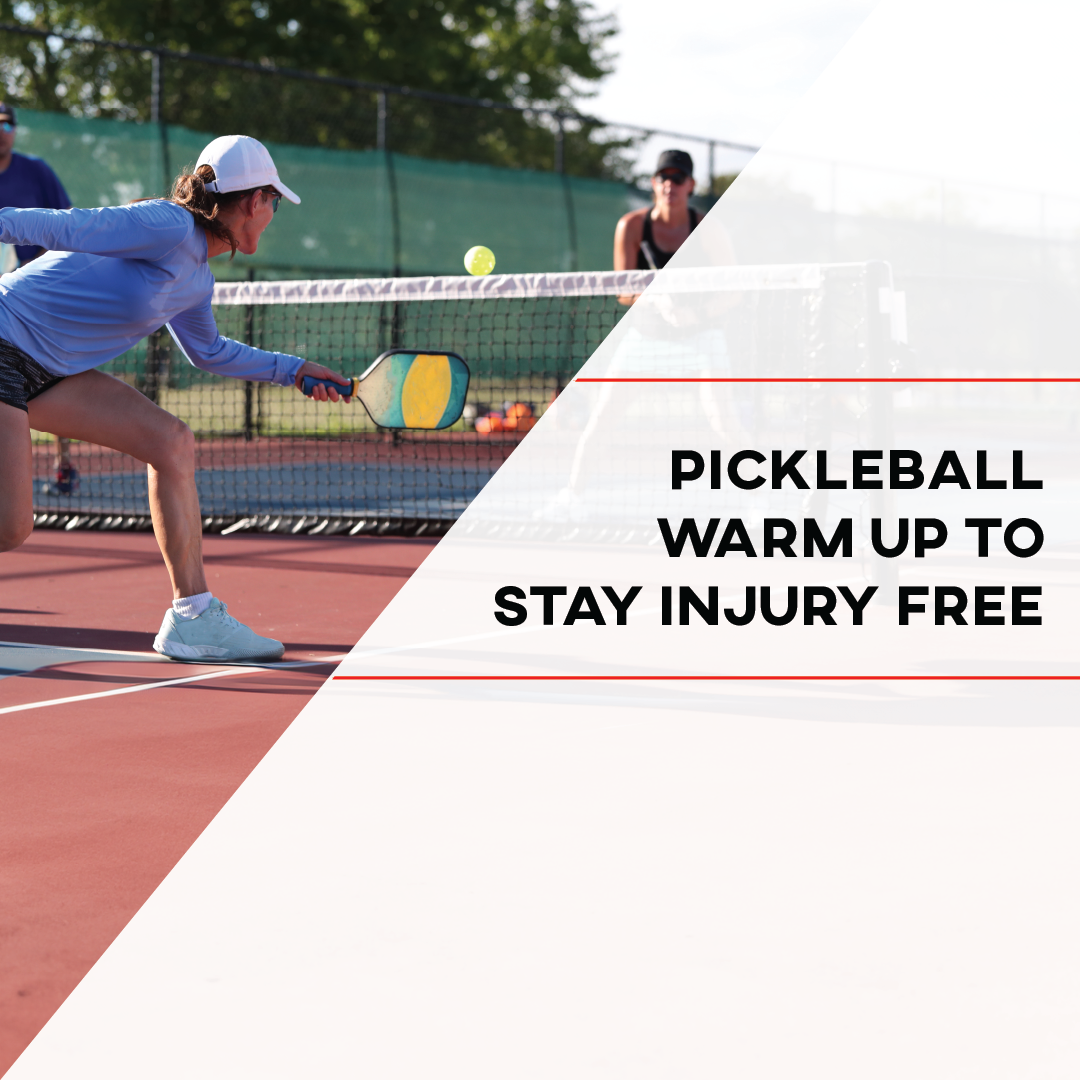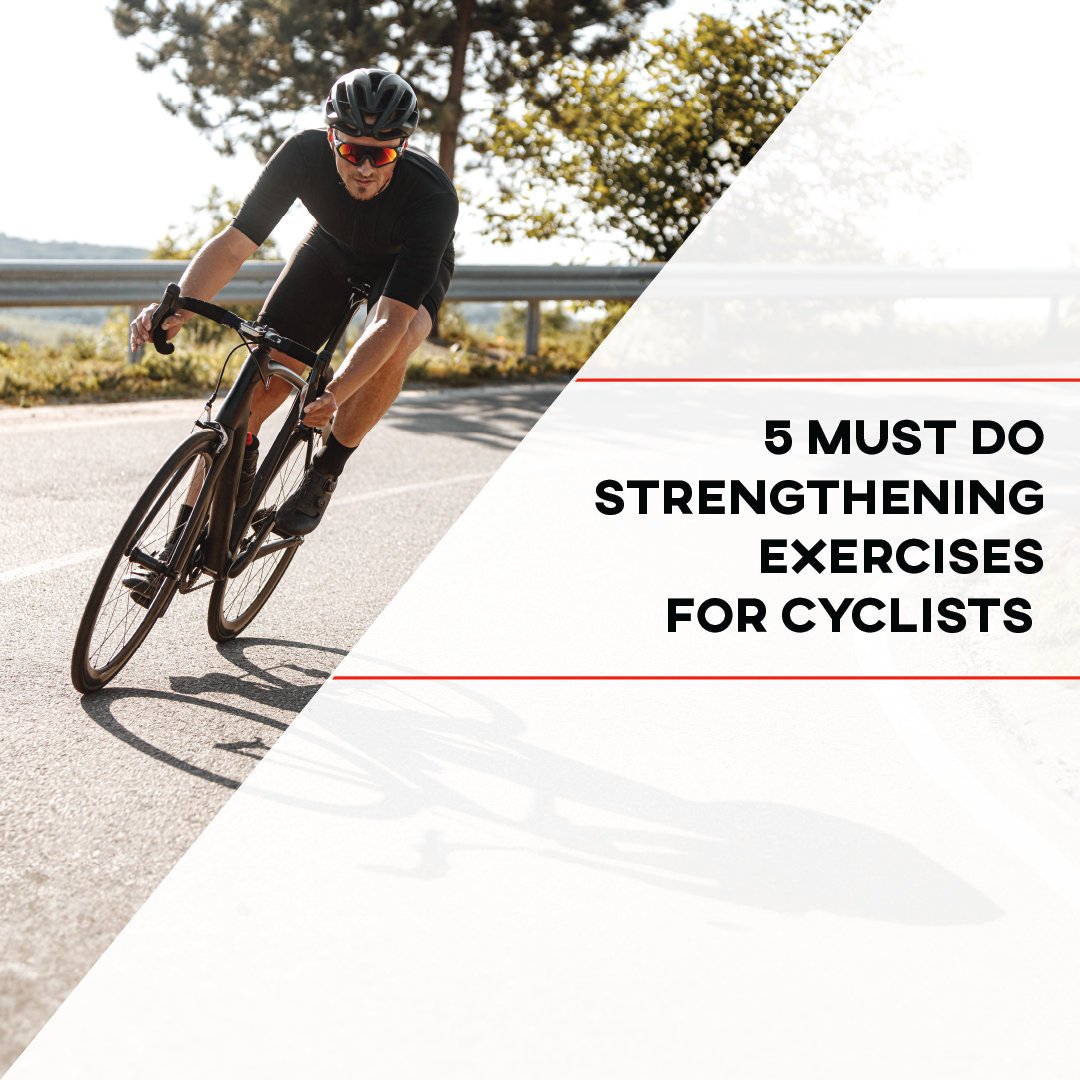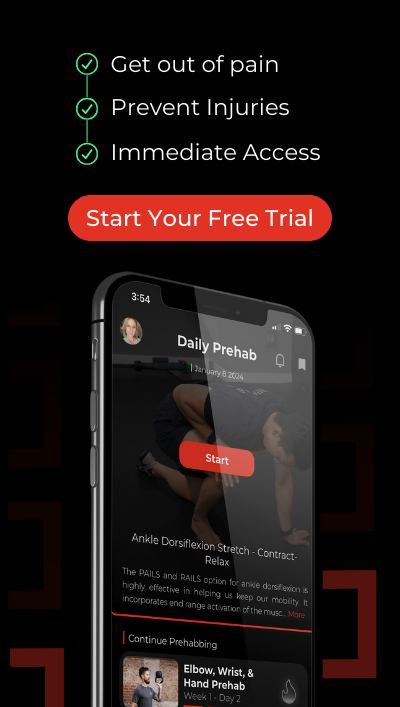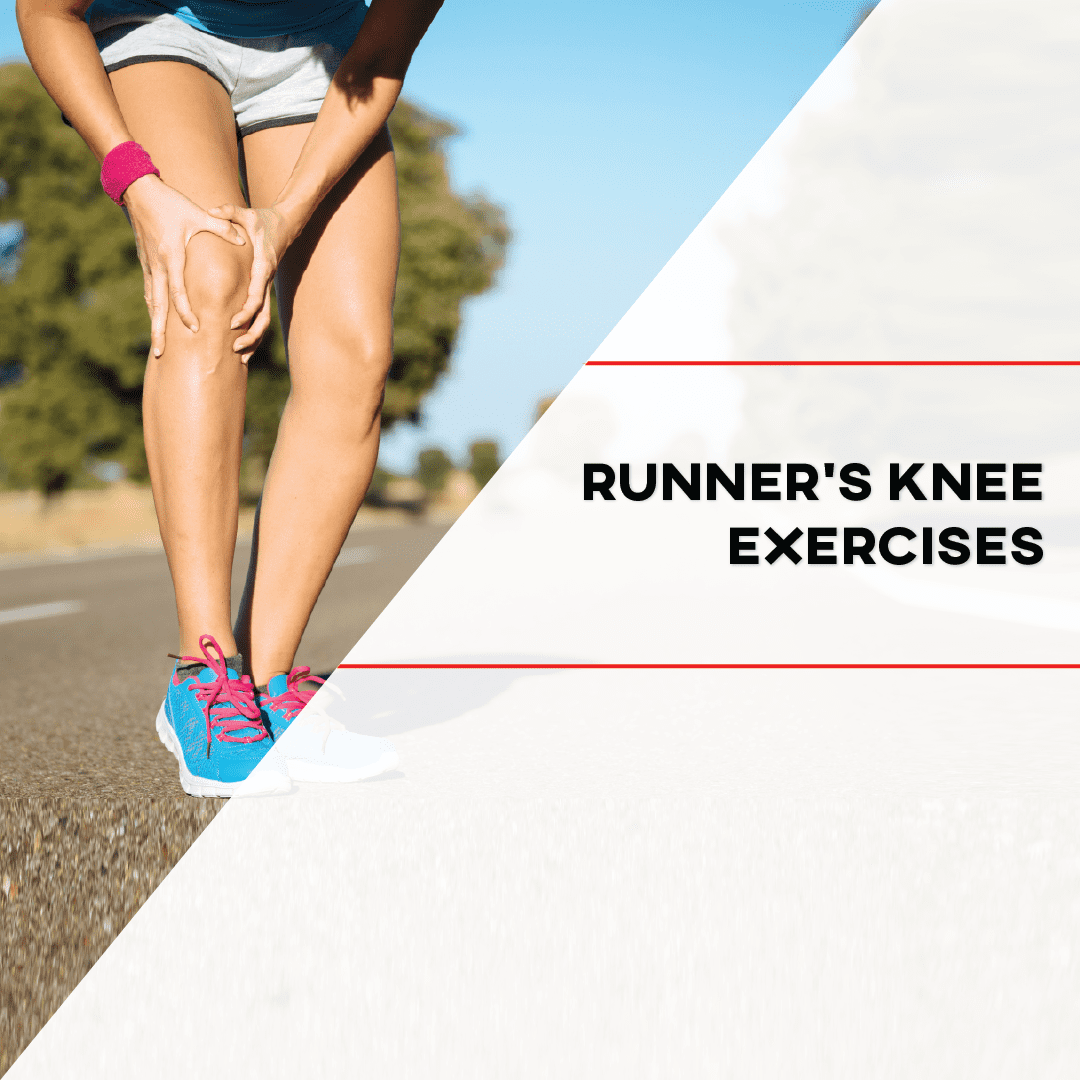
Running is one of the most efficient, effective, and convenient forms of exercise that can be performed anywhere, at any time! Saving money on a gym membership, taking in the beauty of your surrounding city or neighborhood, there are so many benefits to the activity. The thought of it is simple. Put on some shoes, lace them up, and get after it. Simple right? Not exactly. That wonderful “running high” you feel can quickly turn into a nagging pain or injury that can leave you in an uncomfortable state where that moment of striding down your favorite route turns into a frustrating and painful walk back to your home. In fact, Runner’s Knee is one of the most common injuries that can be a nuisance to get rid of. In this article, we will cover runner’s knee causes and treatment, modifiable risk factors related to this condition, and evidence-based strategies including runner’s knee exercises to effectively get you back to running and feeling better than ever.
What is Runner’s Knee?
Running is one of the most common forms of exercise, with over 40 million people in just the United States alone running regularly! Yes, it has been known as a great form of exercise that can maintain great health, but it also can lead to injury, as up to half of runner’s per year report injuries (1). Runner’s Knee is a common knee injury that is used to describe a plethora of conditions that lead to pain around the front of the knee. Although it is called runner’s knee, there are other activities that can lead to this clinical condition, such as walking, cycling, or jumping activities. For the scope of this article, we will specifically be covering how running can contribute to knee pain. Common treatments for runner’s knee includes rest, medications, or injections, which may assist in alleviating symptoms; however, these interventions often do not address the underlying origin of the issue, potentially resulting in poor outcomes (2). On the contrary, taking a more active approach to recovery with exercise and proactively educating yourself as an individual will help promote a better prognosis.
Two of the more common conditions that are often related to runner’s knee include Iliotibial Band Friction Syndrome (ITBFS) and patellofemoral pain syndrome (PFPS). In the next portion of this article, we will break down what each of these conditions are, how they can contribute to runner’s knee, and evidence-based treatments for optimal management.
Looking To Get Back To Running?
A lot of people think that you can just grab a pair of shoes and start running, which can be true. However, failure to prepare may set you up for failure. “You don’t run to get fit, you have to be fit to run.” Without proper training, education, and an understanding of healthy running hygiene habits, issues may arise that can keep you from running. The Running [P]Rehab Program will teach you the best cross-training routine for runners and education to help you maintain optimal running health. Learn more HERE
Iliotibial Band Friction Syndrome (ITBFS)
ITBFS is a common knee injury that is due to inflammation of the distal portion of the iliotibial band, which results in pain that occurs around the outside portion of the knee (2). The repetitive bending and straightening of the knee with daily activities such as walking or running can lead to potential irritation of certain portions of the IT band that eventually can lead to injury. To better conceptualize this, it helps to visualize exactly where the iliotibial band is situated within the human body.
The iliotibial band is a thick band of fascia that originates on the iliac tubercle, blends into the fascia lata just above the mid-thigh, runs alongside the lateral femoral epicondyle and patella, and then inserts on Gerdy’s tubercle just below the lateral tibial plateau. What is unique about the iliotibial band is the type of tissue that it is. As previously reviewed in our tissue healing article, there are 4 main types of tissue in the human body: epithelial, connective, nervous, and muscle. The iliotibial band is a type of connective tissue; however, its properties are different than tissue such as muscle, tendon, or ligaments.
In contrast to tissues such as muscles, tendons, and ligaments, the iliotibial band itself does NOT perform actual contractions within the human body! This is a very important concept to understand when one is conceptualizing the anatomical and physiological properties of the IT band. Furthermore, when one is overcoming an IT band origin of pain, the underlying origin of the source of pain may not be the IT band itself, but the muscular attachments that connect to the IT band!
The muscles that attach to the IT band which you can see above include the vastus lateralis (one of your quadriceps muscles), tensor fascia lata (TFL), gluteus maximus, and biceps femoris (one of your hamstring muscles). If these muscles are tight and/or weak, they can create more tension on the iliotibial band, ultimately leading to pain. This is one of the key aspects to evaluate as a clinician when deciphering what exactly is the underlying cause behind runner’s knee.
Patellofemoral Pain Syndrome
In addition to ITBFS, Patellofemoral Pain Syndrome (PFPS) is one of the most common knee injuries that affects many athletes, including runners (3). To give you a proper framework regarding basic anatomy, the patellofemoral joint consists of the patella (knee cap), articulating with the femur (thigh) bone, which is situated on the front of your knee. As you bend and straighten your knee, the knee cap will slide back and forth within the patellofemoral groove. The way that the knee cap normally moves is similar to a C shape, starting slightly towards the outside of the front portion of the knee, then moving more towards the middle aspect of the knee, and eventually back towards the outside portion of the knee. We use this joint constantly with daily activities, such as negotiating stairs, squatting, walking, and of course, running! To learn more about the biomechanics of the patellofemoral joint, read this excellent article by London from the International Journal of Sports Physical Therapy (4).
Knee Anatomy
From Wikimedia
In order for the patella to move properly within the groove on the femur, it is important for the soft tissues that attach to this joint to have optimal flexibility. In addition, it is important for the muscles that are responsible for moving the knee cap to have adequate strength! You can think of an analogy of a group of people on a canoe. If one side of the canoe is paddling harder than the other side, the canoe is going to move more in a certain direction, and vice versa. The same analogy applies to the patellofemoral joint. If certain soft tissues are tighter, they may pull the patella more in a certain direction, or if certain muscles are not strong enough, the patella may not move the way it is supposed to! This concept of the patella moving incorrectly within the joint is known as patellar maltracking.
Although ITBFS and PFPS are two different clinical conditions, they can coexist. In fact, tightness of the IT band can lead to maltracking issues of the patella, more often than not in a lateral direction. To learn more about how you can strengthen your lower body specifically for runners, read our blog post on runner’s prehab exercises!
Learn The Best Exercises For Runners!
Find The Source of The Issue
The first step in how to manage runner’s knee is finding the underlying cause of your knee pain. More importantly, if you start to feel pain in your knee when running that doesn’t go away after you stop running, STOP! The worst thing you can do is run through bad knee pain, as this may prolong the healing process and keep you sidelined longer than you would hope.
If you have tried to work through your symptoms on your own, and you are still having pain, seeking consultation from a trained physical therapist who has experience working with runners or an orthopedic physician is warranted to receive a proper evaluation, diagnosis, and individualized plan of care!
READ: GET BACK TO RUNNING AFTER INJURY SAFELY
Risk Factors
Being proactive in your recovery process means that you must educate yourself. Below are some of the most common causes and risk factors related to runner’s knee that has been corroborated by recent evidence (2,4,5,6):
- Excessive foot pronation: Pronation is when the inside aspect of your foot excessively collapses inward when striking the ground when walking or running.
- Weak hip abductors, extensors, and external rotators: Weakness in the hip musculature or lack of motor control in this area has been correlated with increased stress at the knee and potential pain/injury.
- Tightness of Tensor Fascia Lata (TFL) and/or Iliotibial Band: Tightness of these structures as previously mentioned may lead to knee pain.
- Leg Length Discrepancy: This is when one leg is longer than the other, either genetically (anatomical) or from structural changes over time (functional), which can lead to altered weight distributions throughout the body and potential injury.
- Tight retinacular attachments to the patella: The retinaculum is a connective tissue throughout our body, and if it has increased tightness, it can pull on the patella, potentially leading to pain/injury.
- Types of training/activity:
- Long-distance running: This can also vary in risk depending on training surface, and elevation, as an increased quantity of hill training (especially downhill) has also been correlated with runner’s knee
-
- Breaststroke swimming: Increased stress is placed on the knee with the type of whipping kick motion that is repetitively performed with this specific stroke in swimming
- Greater weekly mileage: Literature supports that greater weakly mileage increases the risk of an overuse injury, especially if the increase in activity is not graded appropriately.
It is really important to note a combination of risk factors and training errors is more than likely the underlying issue for runner’s knee. To just say excessive foot pronation and/or tight/weak muscles in isolation is 100% the reason why you have runner’s knee is a really bold statement and unfortunately, it is not as simple as that. We should also consider the Biopsychosocial model when evaluating runner’s knee! It is important for us to outline the risk factors above, however, there is always more to take into consideration!
The Prehab membership is the anti-barrier solution to keeping your body healthy. Access state-of-the-art physical therapy, fitness programs, and workouts online in the comforts of your own home or gym! Taking control of your health with exercise & education from the palm of your hand has never been easier. Get access to 50+ programs, 100+ unique workouts, and 3000+ exercises to build your own workout routines. Trial it for free, and learn how to get out of pain, avoid injury, and optimize your health with [P]rehab!
Initial Phase of Recovery
So you have an understanding of what is causing your runner’s knee, now what? The first step following an insult to a tissue is to avoid disruption of the healing process. If you have read some of our previous content specifically related to soft tissue injuries, you may have heard of a term we support known as P.O.L.I.C.E, which stands for protection, optimal loading, ice, compression, and elevation. What has been consistent with more recent literature is the support of early mobility after injuries to enhance the healing process rather than prolonged rest. That being said, with any tendon, ligament, or any soft tissue injury, there is an initial period where you want to protect the injured site from further insult. For runner’s knee specifically, if you know there are activities that reproduce your knee pain, it is your job to modify your activity accordingly to avoid those aggravating factors. Examples may be negotiating stairs, running, walking downhill, and so forth. The worst thing you can do in this phase is to attempt to push through bad pain, as this may set you back further.
Note: We know it can be difficult to be patient especially if you are training for a race or avid about staying active in the gym; however, the short term commitment to recovery will enhance long term outcomes!
LISTEN: RUNNING WITH EXPERT CHRIS JOHNSON
Active Recovery Phase
Once that initial phase of relative rest has occurred, it is time to start remodeling the injured tissue with early mobility, which indeed is an active recovery process. This is where you will want to attack the underlying cause of your knee pain. Below we will dive into some of the modifiable risk factors related to runner’s knee causes and treatment, and how you can decrease these risk factors with exercise! Some aspects of exercise we will cover are related to improving strength, motor control, mobility, and flexibility!
Modifiable Risk Factors: Increased Hip Adduction and Femoral Internal Rotation
The human body is an entire kinetic chain, where joints above and below one another may influence each other in several ways. One concept that has been researched heavily not only with runner’s knee, but also with other knee-related injuries including ACL tears, meniscal injuries and patellofemoral pain is the concept of hip adduction (hip moving closer to midline) and femoral internal rotation (femur bone rotating inwards). This can be conceptualized by looking at the image below from a prospective cohort designed research study by Synder 2013 (7). What happens is as someone takes a step when running for example or playing a sport, if their hip abductor muscles (muscles that move hip away from midline), hip extensors (muscles that move the hip back), and hip external rotators are inhibited and/or weak, they will not be able to counteract this movement impairment that is common in runners and athletes (6,7).
Moreover, Pressword et. al discussed in an article how weakness or inhibition of the gluteus medius specifically (which is responsible for hip abduction) can lead to increased knee valgus force vectors, which ultimately may increase lateral movement of the patella leading to PFPS (8). As a result of this repetitive faulty movement, it may lead to an increased amount of stress at the knee or other structures of the lower extremities.
Femoral Adduction, Hip Internal Rotation, Dynamic Knee Valgus
Strengthening/Motor Control Exercises To Improve Hip Recruitment
There are a variety of excellent exercises that you can perform as part of your exercise routine to improve the strength and motor control of your hip abductors, extensors, and external rotators. A study by Messier et al. discussed how increased muscle strength of the lower extremities increases the shock absorption capabilities of the muscles surrounding the knee joint, which ultimately results in lower loading loads of the knee (2).
Why do runners need to perform strength training? Look below at this infographic!
Captain Morgan
Get set up standing near a wall, while standing on one leg (leg further away from the wall), hold a ball against the wall with the outside of your thigh/knee, on the side that is closer to the wall. While maintaining this, let your hips/pelvis sink on the side further away from the wall followed by lifting your hip back to push harder into the wall. Repeat.
Lateral Step Down
Sample [P]rehab Running Program Exercise
This is one of our favorite strengthening and stability exercises that will focus on eccentric control and can also help with patellar tracking issues. Stand on the edge of a box/step and balance with all of your weight on the leg you want to exercise. The other leg will be hovering off the edge of the step. Slowly lower your hips, lightly tap the ground with your leg that is in the air, and then come back up.
Improving Flexibility and Mobility
In addition to weakness or lack of motor control in the body, tightness with deficits in flexibility and/or mobility may also lead to runner’s knee. In particular, tightness of the hips, quadriceps, hamstrings, and calf musculature can lead to increased stress at the knee as well. There are a variety of ways that you can improve the flexibility of the soft tissues of your lower extremities while also improving joint mobility! Below are some exercises that will help you with flexibility and mobility of the lower extremities!
Standing Dynamic Hamstring Stretch With Foot On Elevated Surface
Get set-up standing feet shoulder-width apart, with the side you want to stretch – place the foot slightly in front of the other onto an elevated surface. While maintaining a relatively flat back, neutral spine, and neutral foot position, hinge at your hip and reach for your toes. Slowly come back to the starting position and repeat.
Half Kneeling Quadriceps Stretch
Place a pad on the ground. Kneel on the pad with one knee and place the other foot flat on the ground with your knee bent in front of you. Wrap a band or strap around the foot that is behind you. Grab onto the strap with one hand behind your shoulder. Pull your foot up creating a stretch in your quad. Once you feel that stretch, lean forward for a few seconds and repeat.
Soft Tissue Interventions: Should I Foam Roll My IT Band?
One of the most common questions I get in the clinic or from clients who are overcoming IT band pain: Should I foam roll my IT Band? Reference back to the top of the article to remind yourself what the anatomical and physiological properties are of the IT band, and that will help guide you towards this answer. As depicted at the beginning of the article, the IT band itself is a non-contractile tissue; however, it has contractile muscular attachments to it which influences its tension! With that being said, it is ineffective to foam roll the IT band in isolation. To effectively enhance the mobility, blood flow, and extensibility of the IT band connective tissue, foam rolling the surrounding structures that attach to this tissue including the biceps femoris, vastus lateralis, TFL, and gluteus maximus is the answer!
Below is a video showing you how to perform this intervention effectively! One important aspect of this mode of treatment important to note is that the evidence for these interventions is moderate at best, and is NOT the solution to the issue. However, as previously noted, it can be a positive addition to overall treatment to assist in pain modulation, tissue extensibility, and exercise recovery.
NOTE: In addition to foam rolling, once your body has more tissue extensibility, mobility, and range of motion, it is important to perform contractile and specific movement related exercises to ensure that your body moves within this new range of motion!
How To Foam Roll Your IT Band
Sample [P]rehab Running Program Exercise
Gait Analysis
From what research has shown, besides improving your motor control, strength, and flexibility/mobility deficits, there is supporting literature around the concept of improving running mechanics related to runner’s knee causes and treatment (9). Many people when first picking up an activity or sport learn the fundamentals. For example, before you play basketball, you learn to dribble, shoot, play defense, and pass. However, running sometimes is an activity that is not taught, and therefore, one may place increased stress on areas of their body if their running form is not adequate. There are a variety of excellent professionals including running coaches or physical therapists who can evaluate your technique with various equipment such as Dartifsh for example, dissect your running mechanics, and then review their assessment with you as well as provide suggestions of how to improve your technique!
Often times, the adjustments provided are subtle and are NOT numerous! The last thing a running coach or physical therapist would want to do is make a person think about 100 different parts of their mechanics when running. Some examples include increasing cadence, arm swing adjustment, knee flexion angle, and foot strike position. If you are interested in either improving your running performance, or are dealing with a nagging injury, seeking consultation from an expert in running mechanics is a great option in addition to working on improving your strength, flexibility, mobility, and motor control! Below in the series of images from an article by Pipken et. al, it shows an example of a runner who is undergoing a gait analysis, with 3 different views (10).
3 View Running Analysis
Closing Thoughts
From reading this article, you may now understand that there are many various causes behind runner’s knee, from training errors, mobility or flexibility deficits, strength issues, and so forth that may contribute to this condition. What is important is to educate yourself on risk factors for runner’s knee, and how you can optimize your exercise routine to ensure you stay healthy while running! There are a variety of excellent exercises that you can perform with minimal equipment that will keep you strong, mobile, and have you running even better than ever. In addition, if you would like to educate yourself more on how to improve your running form, read our blog article on Barefoot Running HERE! As previously discussed, be sure to seek professional consultation if you are unable to manage your symptoms independently in order to receive a proper evaluation, diagnosis, and treatment plan specific for you! Happy running :).
Become A More Efficient Runner
The human movement system provides a beautiful example of a build meant for movement efficiency. The tendons are built not just to anchor down muscles, but also to store and release energy acting as a spring to propel us forward. We were built to run, and not just to run, but to run gracefully. That script can for sure change when muscle weakness is present, tendon elastic energy is lost, or an injury occurs. No worries, running efficiency will return by completing this program!
REFERENCES
- Uptodate.com. 2020. Uptodate. [online] Available at: <https://www.uptodate.com/contents/overview-of-running-injuries-of-the-lower-extremity
- MESSIER, S., LEGAULT, C., SCHOENLANK, C., NEWMAN, J., MARTIN, D. and DEVITA, P., 2008. Risk Factors and Mechanisms of Knee Injury in Runners. Medicine & Science in Sports & Exercise, 40(11), pp.1873-1879.
- Akuthota V, Stilp SK, Lento P, Gonzalez P, Putman AR. Iliotibial band syndrome. In: Frontera WR, Silver JK, Rizzo TD Jr, eds. Essentials of Physical Medicine and Rehabilitation: Musculoskeletal Disorders, Pain, and Rehabilitation. 3rd ed. Philadelphia, PA: Elsevier Saunders; 2015:355-360.
- Loudon, J., 2016. Biomechanics And Pathomechanics of The Patellofemoral Joint. International Journal of Sports Physical Therapy, 11(6), pp.820-830.
- van der Heijden RA, Lankhorst NE, van Linschoten R, Bierma-Zeinstra SM, van Middelkoop M. Exercise for treating patellofemoral pain syndrome. Cochrane Database Syst Rev. 2015;(1):CD010387. doi:10.1002/14651858.CD010387.pub2
- Hudgins TH, Verma A, Kupperman W, Alleva JT. Patellofemoral syndrome. In: Frontera WR, Silver JK, Rizzo TD, eds. Essentials of Physical Medicine and Rehabilitation: Musculoskeletal Disorders, Pain, and Rehabilitation. 4th ed. Philadelphia, PA: Saunders Elsevier; 2019:414-418.
- Snyder J. Hip Internal Rotation and Adduction Correlated with Knee Pain. brookbrushinstitute.com. https://brookbushinstitute.com/article/hip-internal-rotation-and-adduction-correlated-with-knee-pain/.
- Presswood, L., Cronin, J., Keogh, J. W., & Whatman, C. (2008). Gluteus Medius: Applied Anatomy, Dysfunction, Assessment, and Progressive Strengthening. Strength and Conditioning Journal, 30(5), 41-53. doi:10.1519/ssc.0b013e318187f19a
- Werner S. Anterior knee pain: an update of physical therapy. Knee Surg Sports Traumatol Arthrosc. 2014;22(10):2286-94.
- Pipkin, A., Kotecki, K., Hetzel, S., & Heiderscheit, B. (2016). Reliability of a Qualitative Video Analysis for Running. Journal of Orthopaedic & Sports Physical Therapy, 46(7), 556-561. doi:10.2519/jospt.2016.6280
About The Author
Sherif Elnaggar, PT, DPT, OCS, SCS
[P]rehab Head of Content
 Sherif graduated from Temple University with a Bachelor’s of Science Degree and a concentration in Kinesiology. He then received his Doctorate of Physical Therapy Degree from DeSales University, graduating with honors of the professional excellence award and research excellence award. After his graduate studies, he served as Chief Resident of the St. Luke’s Orthopedic Physical Therapy Residency Program. Sherif is a Board Certified Orthopedic Clinical Specialist. Sherif focuses on understanding how movement impairments are affecting function while also promoting lifestyle changes in order to prevent recurrences of injury. His early treatment interests include running related injuries, adolescent sports rehab, and ACL rehab in lower extremity athletes. He also has been involved in performance training for youth soccer players. Outside of working as a physical therapist, he enjoys traveling, running and cycling, following Philadelphia sports teams, and spending time with his family.
Sherif graduated from Temple University with a Bachelor’s of Science Degree and a concentration in Kinesiology. He then received his Doctorate of Physical Therapy Degree from DeSales University, graduating with honors of the professional excellence award and research excellence award. After his graduate studies, he served as Chief Resident of the St. Luke’s Orthopedic Physical Therapy Residency Program. Sherif is a Board Certified Orthopedic Clinical Specialist. Sherif focuses on understanding how movement impairments are affecting function while also promoting lifestyle changes in order to prevent recurrences of injury. His early treatment interests include running related injuries, adolescent sports rehab, and ACL rehab in lower extremity athletes. He also has been involved in performance training for youth soccer players. Outside of working as a physical therapist, he enjoys traveling, running and cycling, following Philadelphia sports teams, and spending time with his family.
Disclaimer – The content here is designed for information & education purposes only and is not intended for medical advice.
About the author : Sherif Elnaggar PT, DPT, OCS
Related posts
$50 Off + Gift a FREE Year
Get $50 off one year of the the Prehab membership for yourself & gift a FREE year to somebody special!
- ✔ Zero wait times, no hidden fees, no barriers to entry!
- ✔ Get out of pain, get stronger, and improve your mobility
- ✔ Access to easy-to-digest physical therapy education videos & resources to learn about your body in the palm of your hand
- ✔ Guidance from trusted Doctors of Physical Therapy

